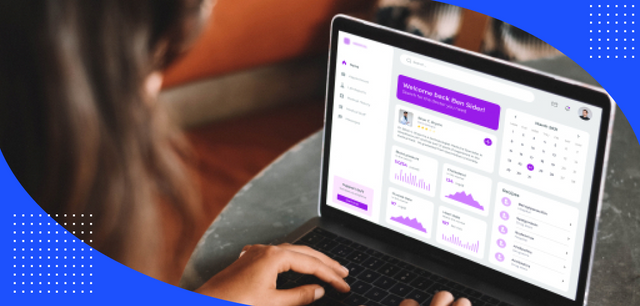
The demand for online healthcare marketplaces significantly increased over the past years, especially during the coronavirus pandemic. Enabling medical providers—hospitals, pharmacies, individual experts, etc.—to deliver services via the internet, doctor appointment booking platforms contribute to increased efficiency and improved customer satisfaction.
Analysts revealed that 52.2% of healthcare experts spend at least 10 hours per week to schedule and confirm appointments while some of them need 30 hours per week. Deloitte found that patients save nearly two hours on average when visiting a clinician virtually in comparison with physical visits.
Thanks to healthcare marketplace apps like Zocdoc, patients can easily book an appointment, purchase procedures, and consult with the required specialists that may include physicians, pediatricians, ophthalmologists, allergists, dentists, and psychologists. According to the survey conducted by Doctolib, 80% of patients and 74% of doctors are going to continue using video consultations after the end of COVID-19.
Therefore, online healthcare marketplace creation is a great opportunity to earn income. To achieve success, it is crucial to implement features to address end-user issues and monetize the system properly while cooperating with a trusted medical application development company.
This article describes how to build a software platform like Zocdoc, involving timeline and cost estimations. You will also learn how Zocdoc adds value to users and what monetization strategy it employs.
How does Zocdoc monetize an online healthcare marketplace?
Established in 2007, Zocdoc is an American digital marketplace company that allows patients to book appointments with doctors and receive medical care. By now, Zocdoc has raised around $376 million over 10 funding rounds. As of February 2021, the organization has a post-money valuation of $1–$10 billion.
Today a healthcare marketplace app serves millions of people across the USA, enabling them to find local clinicians based on patient reviews, search medical providers according to symptoms, and get reminders about appointments.
Zocdoc also lets customers scan their insurance cards to find specialists who match the requirements. Aiming to deliver online consultations during COVID-19, the firm launched a telehealth solution in May 2020.
At the moment, an online marketplace platform is available via the website and mobile application that can be downloaded from the App Store or Google Play.
Concerning a pricing model, the system provides medical personnel with a scheduling system for paid subscriptions. In 2019, Zocdoc decided to change a monetization strategy in some markets by charging a referral per-customer fee instead of using a flat subscription.
As a result, the company managed to increase the number of healthcare service vendors by 50% and generate significantly higher revenue. In addition, Zocdoc allows doctors to promote appointment slots via the platform.
Design of an online healthcare marketplace
To build a healthcare marketplace app that meets audience expectations and contributes to higher satisfaction rates, you should create a user-friendly design. SWEOR reports that 88% of users are not willing to revisit the website after receiving a poor experience. Therefore, it is crucial to focus on this project stage and partner with a trusted UI/UX design company.
Software experts will help you implement a self-explanatory user interface and smooth navigation, so that vendors and customers can easily find anything they want. If you decide to launch a healthcare marketplace website, you should ensure design responsiveness across all screens and devices, including smartphones.
Statista informs that 54.8% of global website traffic came from mobile devices—excluding tablets—in the first quarter of 2021. By achieving consistency, you will attract more users and boost customer engagement.
Time: 200 hours
Development of a healthcare marketplace app like Zocdoc
An online healthcare marketplace that brings together clinicians and patients consists of two apps or modules. For example, to meet the business-specific challenges of medical personnel, it is more reasonable to create a web solution that will allow doctors to manage schedules and appointments. To add value to customers, you should develop a web or mobile application.
Now, let’s consider the list of top-priority features for both parties.
Features for medical personnel
1. Registration and authorization
Medical personnel should have the ability to easily register and authorize on an online marketplace platform. After signing up, doctors will be able to add information about their services, communicate with patients, manage schedules, and track payments.
To prevent fraud and increase trust, the registration process should include verification of healthcare experts, from their qualifications to banking details. For instance, you can require them to provide certain documents and certificates confirming they have relevant education and experience to offer medical care.
With the view of enforcing security and meeting various regulations—i.e., HIPAA, GDPR—you need to enable two-factor authentication.
Time: 60-80 hours
2. Doctor profile
A profile is an important feature of a healthcare marketplace app like Zocdoc that generally contains basic information about a doctor, including name, surname, photo, location, specialty, education, certifications, and affiliations. It should also provide details such as user reviews, rating, and type of visits—video or in-person—delivered by a clinician.
Time: 80 hours
3. Schedule management
Medical personnel should be able to create, edit, and view upcoming schedules on a calendar. A healthcare marketplace app should automatically check the working schedules of healthcare professionals and tailor the time suitable for both parties.
When building a software platform like Zocdoc, it is crucial to prevent any contradictions in doctor schedules in case unexpected events occur.
For example, if a clinician cannot hold video and in-person visits due to illness, the system should automatically notify patients—via SMS, email, or in-app message—and offer available appointment slots of other healthcare professionals.
Find out how our team implemented this functionality when creating an online healthcare marketplace for the UK tech company.
Time: 300 hours
4. Online communication with patients
Video and audio conferencing is a key feature of a doctor appointment booking app. Thanks to this, clinicians will be able to conduct virtual visits and consult patients remotely. A healthcare software development company should enable text messaging by implementing chats, in which medical experts will share health data, diagnostic reports, treatment plans, and recommendations.